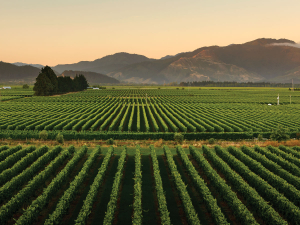At what point will Marlborough be fully planted? How will this impact the industry, what will it mean for our markets and what new opportunities and strategies will be available to and/or required of growers and wineries?
That was the question asked by PwC, given for years there has been talk about when, not if, Marlborough will reach saturation point in terms of plantings.
The PwC report states that Marlborough has approximately 5,000ha of commercially viable, production land left. That is likely to be fully planted out by 2025, just six years from now.
“Assuming continued demand, yield growth and the ability to source 10 percent of grapes from outside Marlborough, modelled supply suggests the region may reach near land capacity by around 2025; supply limits may be reached by around 2028,” the report states.
PwC’s report states the growth of Marlborough has outstripped the industry growth. Marlborough production has increased from 68 percent of the country’s total production to 76 percent, between 2011 and 2018. That is despite the fact that only 20 percent of the country’s wineries are within the region.
More than 85 percent of the wine produced in Marlborough is Sauvignon Blanc, while 75 percent of all New Zealand wine produced in 2017 was Sauvignon.
“New Zealand has the highest varietal concentration in any major wine producing country, albeit our size is comparable to certain large wine producing regions.”
There is evidence PwC says, that suggests there is the potential risk of market oversupply of Sauvignon Blanc. Any supply or demand shock could have overarching effects, including; increased price competition, decreased industry profits and a potentially damaged Marlborough industry.
Controlling that potential supply issue is something the report strongly supports. The industry needs to drive value enhancement and productivity, while maintaining quality. It suggests that NZW provide education to members that supports category innovation and premiumisation. Alongside that recommendation, PwC says NZW should also support research on yield growth, wine styles and sensory profiling to ensure consistency.
What that means is maintaining quality by quantifiably measuring wines against industry standards and varietal profile. Wineries would be required to meet minimum quality standards, which once established would uphold the value of the New Zealand brand and in turn “help drive premiumisation”.
Another area to consider PwC says, is mimicing profiles from other terroir. Wines can be crafted to match the aroma and flavour of another region and effectively increase overall New Zealand supply. “A New Zealand Sauvignon Blanc can be created alongside specific Marlborough Sauvignon Blanc varietal profiles that have proven market demand.”
In summary the report offers a number of options to prevent a blow out of supply and quality. But none are an easy answer in terms of implementation.
The full PwC Strategic Review is available on the member’s site of nzwine.com












